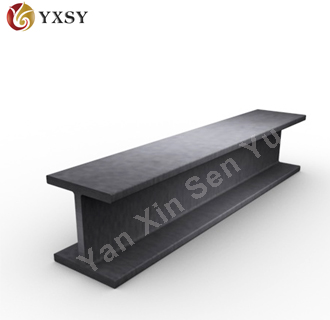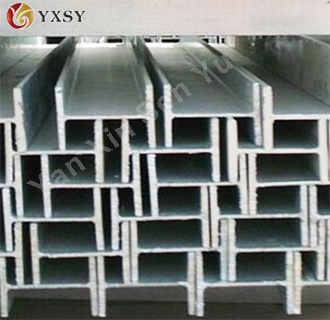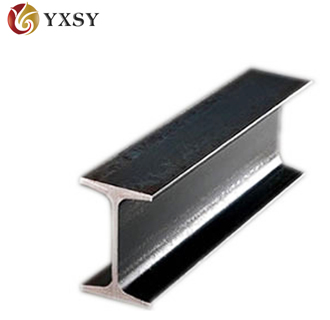In fact, the difference between H-beam and I-beam is a problem that many people are confused. Even from the appearance, there are still many people who can't distinguish them. Today I will introduce the differences between the two in detail:

1. Whether I-shaped steel is ordinary or light, because the cross-sectional dimensions are relatively high and narrow, the moments of inertia of the two main sleeves of the cross-section are greatly different. Therefore, they can only be used directly on the web. Bending members in the plane or grouping them into lattice-type force members.

2. H-beams are highly efficient and economical cutting profiles (others include cold-formed thin-walled sections, profiled steel plates, etc.). Due to the reasonable cross-sectional shape, they can make the steel perform better and improve cutting capacity. Unlike ordinary I-beams, the flanges of H-shaped steel are widened, and the inner and outer surfaces are usually parallel, which can be easily connected with high-strength bolts and other components.
3. The flanges of H-shaped steel are all of equal thickness, with rolled sections, and also combined sections composed of 3 plates welded. I-beams are rolled sections. Due to the poor production process, the inside edge of the flange has a 1:10 slope. H-shaped steel is different from ordinary I-beams in that it only uses one set of horizontal rolls. Because its flange is wide and has no slope (or small slope), it is necessary to add a set of vertical rolls to perform rolling at the same time. , Its rolling process and equipment are more complicated than ordinary rolling mills.

I-Beam
China's national standard for hot-rolled H-beams (GB / T11263-1998) divides H-beams into narrow flanges, wide flanges, and steel piles. Their codes are hz, hk, and hu, respectively. Narrow flange H-shaped steel is suitable for beams or bending members, while wide flange H-shaped steel and H-shaped steel piles are suitable for axial compression members or bending members. Compared with H-beam, under the premise of equal weight, I-beams are not as good as H-beam.
4. The side length of I-beam is small and the height is large, it can only bear the force in one direction.
5. The H-shaped steel groove is deep and thick, and can withstand forces in two directions.
6. With the development of steel structures, only I-beams are not enough, that is, thick I-beams, which are used for load-bearing columns, are prone to instability.
7. The difference between H-beam and I-beam is that I-beam can only be used for beams, and H-beam can be used for load-bearing columns of the structure
8. H-section steel is an economical section steel with better cross-section mechanical properties than I-beams. It is named because its cross-sectional shape is the same as the English letter "H". The flanges of hot-rolled H-beams are wider than I-beams, have greater lateral stiffness, and are more resistant to bending. H-beams are lighter than I-beams under the same specifications. The manufacturing principle of WeChat is good and worthy of attention.
9. The flange of I-shaped steel is thicker on the web and thinner on the outside; the flange of H-shaped steel is equi-faced.
10. HW HM HN H is a general name for H-beam, H-beam is welded; HW HM HN is hot-rolled.
11, HW is H-beam height and flange width are basically equal; it is mainly used for steel core columns in reinforced concrete frame structure columns, also known as stiff steel columns; it is mainly used for columns in steel structures.
12. HM is the ratio of the height of H-shaped steel to the width of the flange is approximately 1.33 ~~ 1.75; it is mainly used in steel structures: used as steel frame columns, and used as frame beams in frame structures subjected to dynamic loads; for example: equipment platforms.
13. HN is the ratio of the height of the H-beam and the width of the flange greater than or equal to 2; it is mainly used for beams; the use of I-beams is equivalent to HN-beams.
About the difference between H-beam and I-beam, YanXinSenYu introduced here for you, if you are interested in our content, please continue to pay attention to our website!













